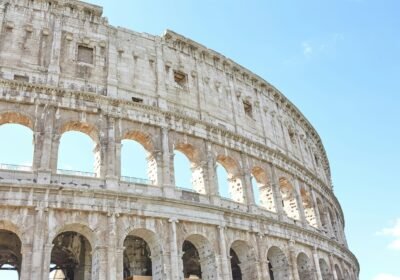The Enigmatic Allure of Monaco: A Journey Through History, Architecture, and Culture
The Origin Story of Monaco
Monaco, a small yet significant principality located along the Mediterranean coast, has a rich origin story that dates back to its establishment by the Grimaldi family in 1215. The region’s advantageous geographical positioning made it a crucial hub for trade and defense during medieval times. At that time, Monaco served as a point of strategic importance, facilitating not only maritime trade routes but also providing a natural harbor that was essential for the protection of vessels navigating the treacherous waters of the Mediterranean.
The Grimaldi family’s ascension to power was marked by multiple attempts to seize control of this strategically vital territory. According to popular legend, the initial claim was made by Francesco Grimaldi, who, disguised as a monk, captured the Rock of Monaco during a surprise attack. This act of cunning and bravery set the foundation for the Grimaldi dynasty, which has continued to govern the principality for over seven centuries. This historical episode is steeped in folklore, signifying the blend of strategy and mystique that characterizes Monaco’s early days.
Throughout the medieval era, the principality’s role expanded, as Monaco became increasingly involved in European politics and conflicts. Its alliances and rivalries shaped its development, marking it as a notable player amidst the intricate web of feudal relationships. The influence of Monaco grew, particularly as it evolved from a small fortified settlement into a recognized principality under the protection of French sovereignty in the 17th century. This process not only solidified its status but also laid the groundwork for a unique blend of Italian and French culture, which remains a hallmark of Monaco today.
The story of Monaco is not just one of political maneuvering; it also encapsulates a rich tapestry of cultural evolution, embodying legends and historical incidents that have enchanted visitors for centuries. As a result, Monaco has transformed over the years from its humble beginnings into the captivating destination it is recognized as today.
Key Historical Events and Notable Figures
Monaco, a small yet historically rich principality on the Mediterranean coast, has experienced numerous pivotal events that have shaped its identity and governance. One of the most significant periods in Monaco’s history was the French Revolution, which saw the abolishment of the monarchy in France and a widespread ripple effect across Europe. Although Monaco was not directly affected by the Revolution, its proximity to France meant that it had to navigate the political turbulence of that era carefully. The subsequent restoration of the monarchy in France helped stabilize Monaco’s rule under the Grimaldi family, setting the stage for future development.
World War II further tested Monaco’s resilience and political stance. During the war, the principality remained neutral, providing refuge to those fleeing the conflict. It was also in this era that Prince Rainier III—later recognized for his impactful reign—ascended to the throne in 1949. His vision for Monaco transformed the principality into a modern luxury destination, attracting global attention and high-profile visitors. The marriage of Rainier III to American actress Grace Kelly in 1956 not only reinforced Monaco’s glamorous image but also intensified its cultural appeal. Princess Grace was instrumental in fostering the arts and humanitarian efforts, amplifying the community’s cultural footprint.
Today, the legacy of these historical figures and events continues to resonate within Monopoly. The principality’s governmental structure, shaped largely by its history with France, reflects a blend of tradition and modernity. Events like the Grand Prix and the Monaco Yacht Show further highlight the transformation initiated by these notable figures. Through a combination of historical events and influential leaders, Monaco has evolved into a symbol of luxury and sophistication, making it a fascinating topic for those looking to write a detailed and engaging blog post about the historical significance, architecture, and cultural impact of this enchanting place.
Architectural Wonders of Monaco
Monaco, a sovereign city-state nestled on the French Riviera, is home to an impressive array of architectural marvels that reflect its rich history and cultural evolution. The iconic Prince’s Palace, the official residence of the Prince of Monaco, exemplifies a blend of medieval fortifications and Renaissance design, symbolizing the principality’s enduring power. Originally constructed in 1191, it has undergone numerous renovations, showcasing the evolving architectural styles while preserving its historical essence.
The Monte Carlo Casino is another hallmark of Monaco’s architectural landscape. Opened in 1863, this opulent establishment is a masterpiece of Belle Époque design, characterized by its lavish interiors, grand chandeliers, and intricate frescoes. Designed by architect Charles Garnier, it stands as a testament to Monaco’s luxurious reputation and has attracted visitors from around the world. The casino’s façade, with its intricate sculptures and ornate details, not only serves as a playground for the elite but also represents the wealth generated from tourism and gaming industries.
Further enhancing Monaco’s architectural heritage is the Cathedral of Our Lady Immaculate, a Romanesque-Byzantine structure consecrated in 1911. This cathedral is not only a spiritual hub but also a site of historical significance, housing the graves of several Grimaldi princes. Visitors to Monaco can admire the stunning façade and tranquil interiors, providing insights into the principality’s religious practices and cultural values.
As Monaco continues to evolve, ongoing preservation efforts are vital for maintaining these landmarks. The collaboration between government bodies and heritage organizations ensures that future generations can experience the principality’s architectural wonders. By embracing both its historical roots and contemporary influences, Monaco stands as a vivid example of how architecture can narrate the stories of a place, contributing to its lasting significance in history and culture.
Monaco Today: A Cultural and Tourist Hub
Monaco, a small yet captivating sovereign city-state located on the French Riviera, stands as a testament to the harmonious blend of historical richness and modern vibrancy. The cultural allure of Monaco attracts millions of tourists each year, enticing them with its unique offerings. Visitors can explore a variety of cultural experiences, including world-class museums, art galleries, and annual events that celebrate the principality’s legacy and contemporary vibe.
The Oceanographic Museum, one of Monaco’s most prominent attractions, is an architectural marvel that showcases a diverse collection of marine exhibits. Founded by Prince Albert I, it serves not only as a museum but also as a scientific institute dedicated to the study of marine sciences. Alongside this, the Nouveau Musée National de Monaco presents a compelling array of contemporary art, reflecting Monaco’s commitment to integrating tradition with modern expression.
Furthermore, Monaco is renowned for its annual events, most notably the Monaco Grand Prix. This illustrious motorsport event attracts racing enthusiasts and celebrities alike, embodying the glamour associated with the city-state. Beyond racing, events such as the Monte-Carlo Television Festival and the Monte-Carlo Jazz Festival highlight Monaco’s dynamic cultural calendar, providing visitors numerous options to engage with its rich entertainment scene.
Monaco’s significance extends beyond its luxurious image; it plays a crucial role in global tourism. With its picturesque harbor, exquisite dining, and high-end shopping, it caters to a diverse audience, from history aficionados to luxury seekers. The principality is a living museum, reminding visitors of its storied past, while continually evolving to embrace the present. The blend of historic monuments with contemporary lifestyle makes Monaco a crucial case study for anyone interested in cultural tourism.
As one delves into the fabric of Monaco, it becomes evident that its charm is not merely a facade; it is rooted in a history filled with notable figures and remarkable transformations. Thus, experiencing Monaco today offers not just a glimpse into its past but an understanding of its continuing journey.









